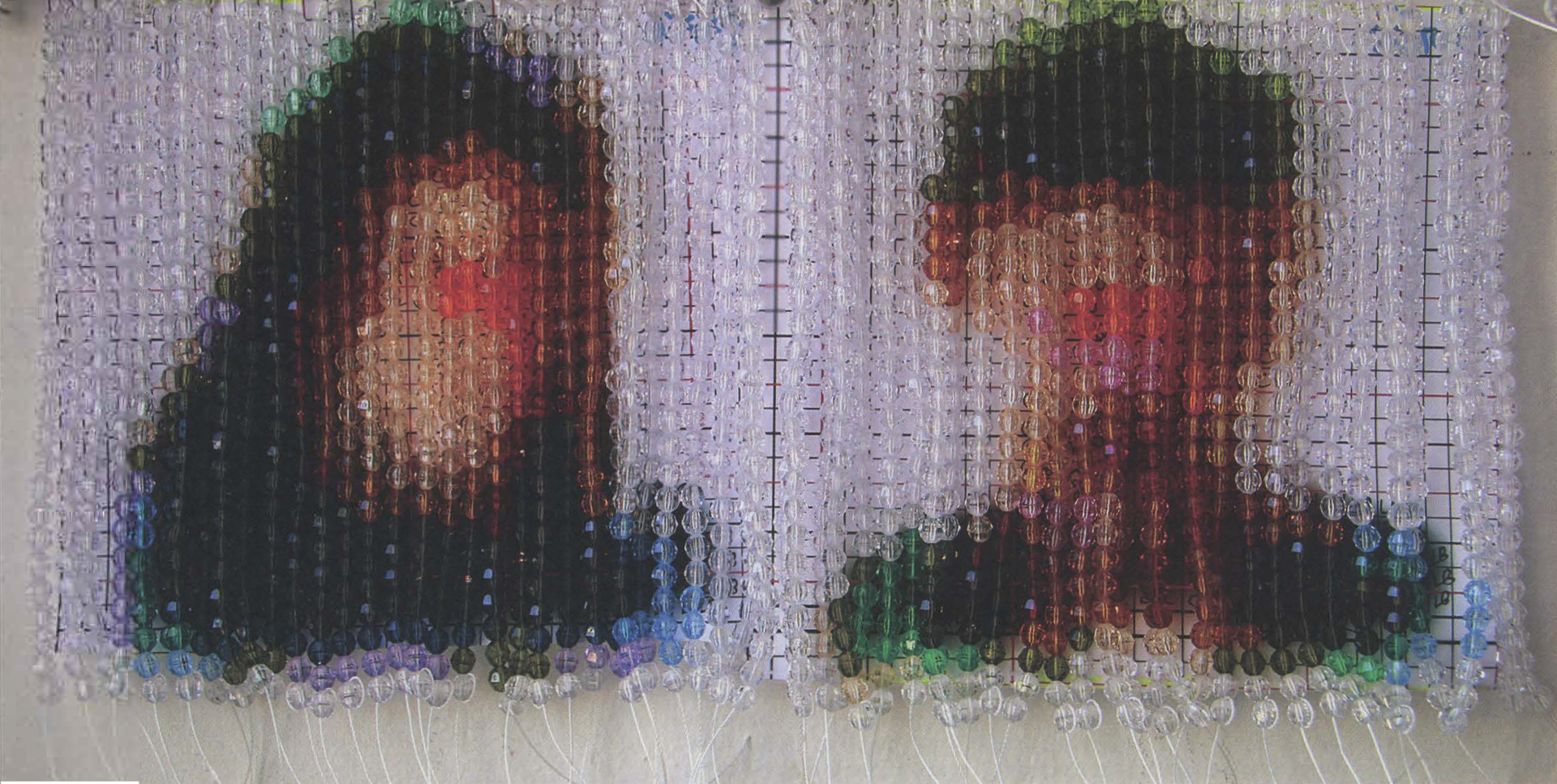Taraneh Hemami: Most Wanted
Artist(s):
Title:
- Most Wanted
Exhibition:
Creation Year:
- 2007
Medium:
- Hand-crafted beaded curtain
Size:
- 9 feet x 7 feet
Category:
Artist Statement:
Most Wanted investigates the nature of perception, recognition, and representation while examining construction of the image of the new enemy. Interpretations of a series of faceless portrayals of the most-wanted terrorists as identified by the United States government contemplate the ways in which stereotypical perceptions of people are created while pondering the relationship between image and
identity. A few months after the 9/11 attacks, I came across a comically blurry, low-resolution online image produced by the US government that pictured over 70 of the “Most Wanted” international terrorists. Each suspect was pictured from the neck up. Although individual features cannot be made out because of the extreme pixelation of the image, general characteristics can be seen on the majority of people pictured – darkish skin, men with dark facial hair, women wearing head coverings. Even with such minimal visual information, there is an overbearing sense that these physical traits define terrorism as we know it and characterize the image of the “New Enemy” in the 21st century. Taking off from this foundation, Most Wanted addresses stereotypical misrepresentations of an entire group of people and challenges the Islamophobia and xenophobia
that have given rise to distorted images of people of Middle Eastern descent living in the U.S. Most Wanted explores the idea of portraiture and the widely differing contexts in which portraits can be seen. In the specific context of the U.S. government “Most Wanted” terrorist list, the faces with darkish skin, beards, and head coverings are positioned as individuals who need to be apprehended and brought to justice – the faces of the enemy and the proponents of global terrorism. Yet, without names, gender, or even cultural background, the blurry abstract faces are simply visual
representations of unknown people. The absolute reduction of concrete facial information makes them completely unrecognizable and brings forth the question of where the
danger actually lies. Are we conflating and equating people with nations? Drawing upon my Iranian cultural heritage, I
attempt to disrupt the tendency to generalize by placing these same abstracted faces into very different contexts, referencing common beaded wall-hangings and rosaries and massproduced iconic memorabilia of and about religious figures, symbols, and stories available at any bazaar in Iran as well as shrines for those considered martyrs. Most Wanted
brings forth the question of context and challenges assumptions that we, as a viewing audience in the U.S., may unconsciously or implicitly bring to these abstracted images
of people who could be anyone. The project questions our potential to fall into easy stereotyping and misunderstanding of cultures that are not our own.
Technical Information:
The handcrafted beaded curtain is an exact replica of a low-resolution poster I downloaded from a United States government web site immediately after September 11, 2001.
The image was graphed and color-coded, creating a pattern to follow for beading over 850,000 6-millimeter, faceted plastic beads, each representing a pixel in the original image. The heads were individually beaded and restrung together to create the large curtain, resulting in a further-abstracted version of the already-degraded image. Most Wanted was commissioned by Intersection for the Arts, funded in part by the San Francisco Foundation, and assembled in the gallery with the help of many in May 2007





